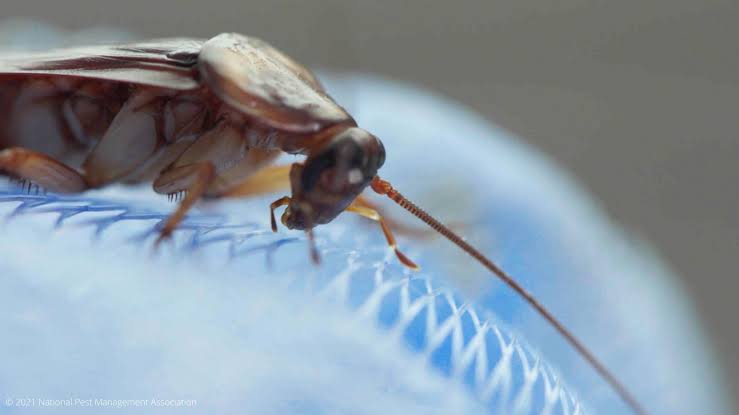As the night falls, the world of household pests comes alive, presenting homeowners with unique challenges in understanding and managing their nocturnal activities. Curiosity surrounding the reasons behind why roaches coming out at night, the effectiveness of steel wool as a barrier against mice, and the enigmatic behaviors of blue bottle flies underscores the need for comprehensive knowledge and preventive measures. This blog aims to delve into the compelling dynamics of these nocturnal pests, offering insights into their behaviors and practical strategies to fortify homes against potential infestations.
Roaches: Unraveling Their Nocturnal Nature
The sight of roaches scurrying across kitchen floors at night often prompts questions about their nocturnal habits. Roaches are naturally drawn to darkness, seeking refuge during the day and emerging at night to scavenge for food and water. Understanding the evolutionary factors and survival instincts that drive these behaviors is key to implementing effective roach control measures. By addressing conducive conditions such as poor sanitation, moisture, and entry points, homeowners can curtail roach infestations and minimize their nocturnal encroachments.
Steel Wool: A Formidable Shield Against Mice Intrusions
The efficacy of steel wool as a barrier against mice intrusions is rooted in its physical properties. Mice find it challenging to gnaw through the dense fibers of steel wool, making it an effective deterrent for sealing entry points and vulnerable openings in homes. By diligently applying steel wool for mice to potential access areas, homeowners fortify their defenses and create an inhospitable environment for mice. However, it’s vital to complement these physical barriers with a holistic approach that includes sanitation, waste management, and ongoing vigilance to prevent and control mice infestations effectively.
Blue Bottle Flies: Unveiling Their Intriguing Ways
The iridescent appearance and distinctive flight patterns of blue bottle flies make them a subject of fascination and concern for homeowners. These flies are typically attracted to decaying organic matter, posing hygiene and health risks within living spaces. By gaining insights into their preferences and breeding habitats, homeowners can take proactive measures to mitigate the allure of homes to blue bottle flies. Embracing proper waste disposal, sanitation, and exclusion methods can significantly reduce their presence and uphold a clean and pest-resistant living environment.
Integrated Pest Management: Embracing a Holistic Approach
Pest management strategies must encompass an integrated and multifaceted approach to effectively counteract infestations. Integrated Pest Management (IPM) emphasizes proactive prevention, targeted interventions, and ongoing monitoring to address the underlying conditions that sustain pest populations. By integrating measures such as structural repairs, sanitation, natural deterrents, and physical barriers like steel wool, homeowners can create resilient defenses against a spectrum of pests, fostering long-term control and environmental sustainability.
Natural Remedies and Preventive Practices: Nurturing Pest-Resistant Habitats
Natural remedies and preventive practices offer homeowners environmentally responsible options for pest management. Essential oils with pest-repelling properties, such as lavender, peppermint, or citronella, serve as effective deterrents for various pests. Moreover, adopting conscientious waste disposal, maintaining clean living spaces, and implementing stringent exclusion methods contribute to creating environments that are less conducive to pest infestations. By embracing these natural remedies and preventive practices, homeowners can foster pest-resistant habitats without compromising environmental integrity.
Education and Awareness: Empowering Homeowners for Effective Pest Control
Empowering homeowners with knowledge and awareness about the habits, vulnerabilities, and preventive strategies for nocturnal pests plays a pivotal role in effective pest management. Educating homeowners about the motivations behind roach nocturnal activity, the protective potential of steel wool for mice, and the allure of blue bottle flies fosters proactive and informed decision-making. Armed with insights into pest biology, habits, and environmental requirements, homeowners are positioned to adopt preventive measures and targeted interventions, forging the path to healthier, more resilient living spaces.
Conclusion: Charting a Path to Resilient, Pest-Resistant Living
The enigmatic behaviors of nocturnal pests demand thorough understanding and proactive management to safeguard homes from potential infestations. By decoding the nocturnal nature of roaches, harnessing the protective potential of steel wool for mice prevention, and unraveling the mysterious world of blue bottle flies, homeowners can fortify their defenses with knowledge and effective strategies. Integrating holistic approaches, natural remedies, and preventive practices cultivates resilient and pest-resistant living environments, harmonizing the quest for peaceful coexistence with the prevention of nocturnal pest intrusions.
In this comprehensive blog, we have ventured into the nocturnal realm of household pests, shedding light on their habits and presenting insights and strategies for proactive management. By embracing knowledge and holistic pest control strategies, homeowners can navigate the challenges posed by nocturnal pests with confidence, fostering healthier and more resilient living spaces. Armed with awareness and a commitment to environmental integrity, homeowners can chart a path to harmonious coexistence, free from the encroachments of nocturnal pests.
